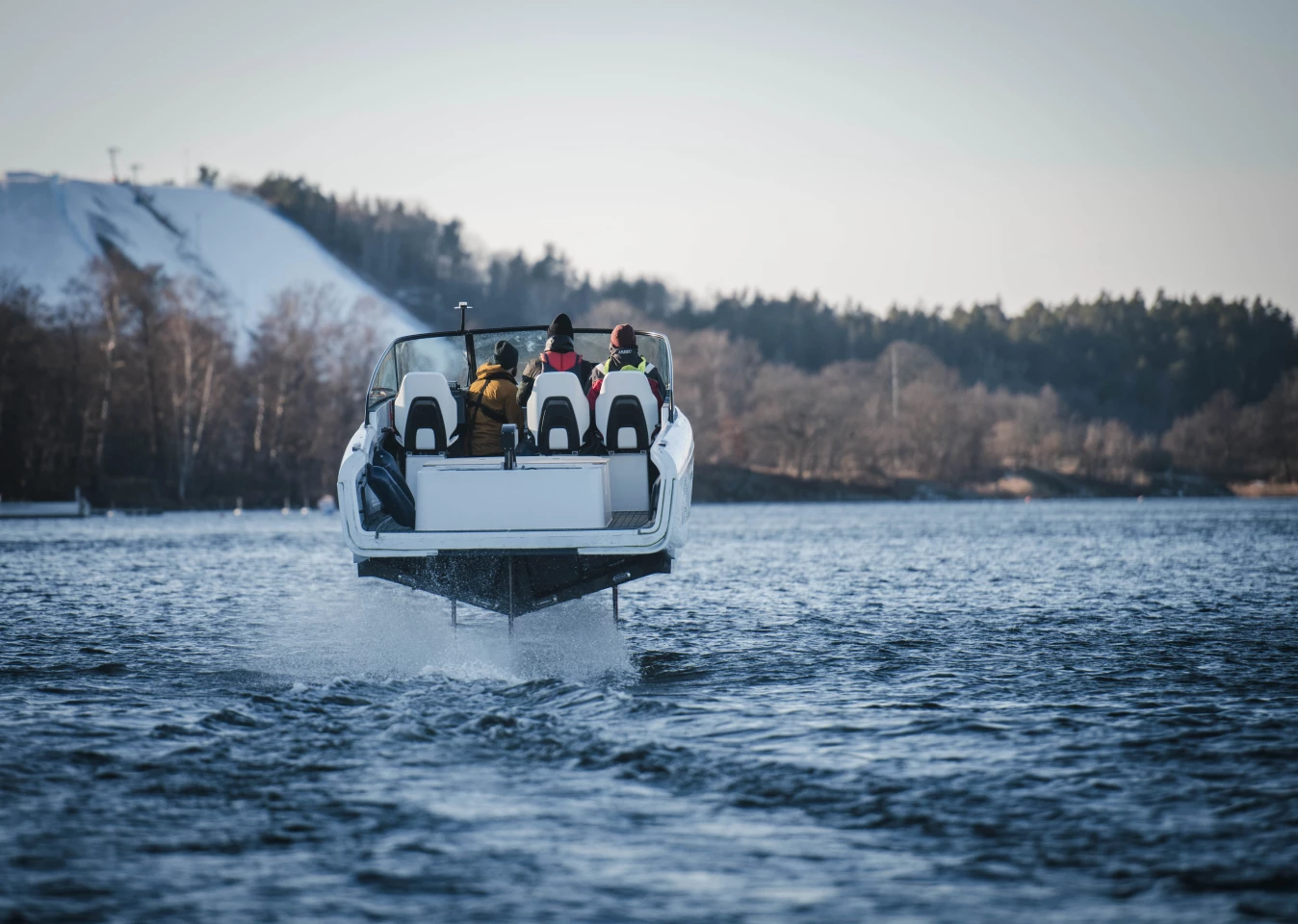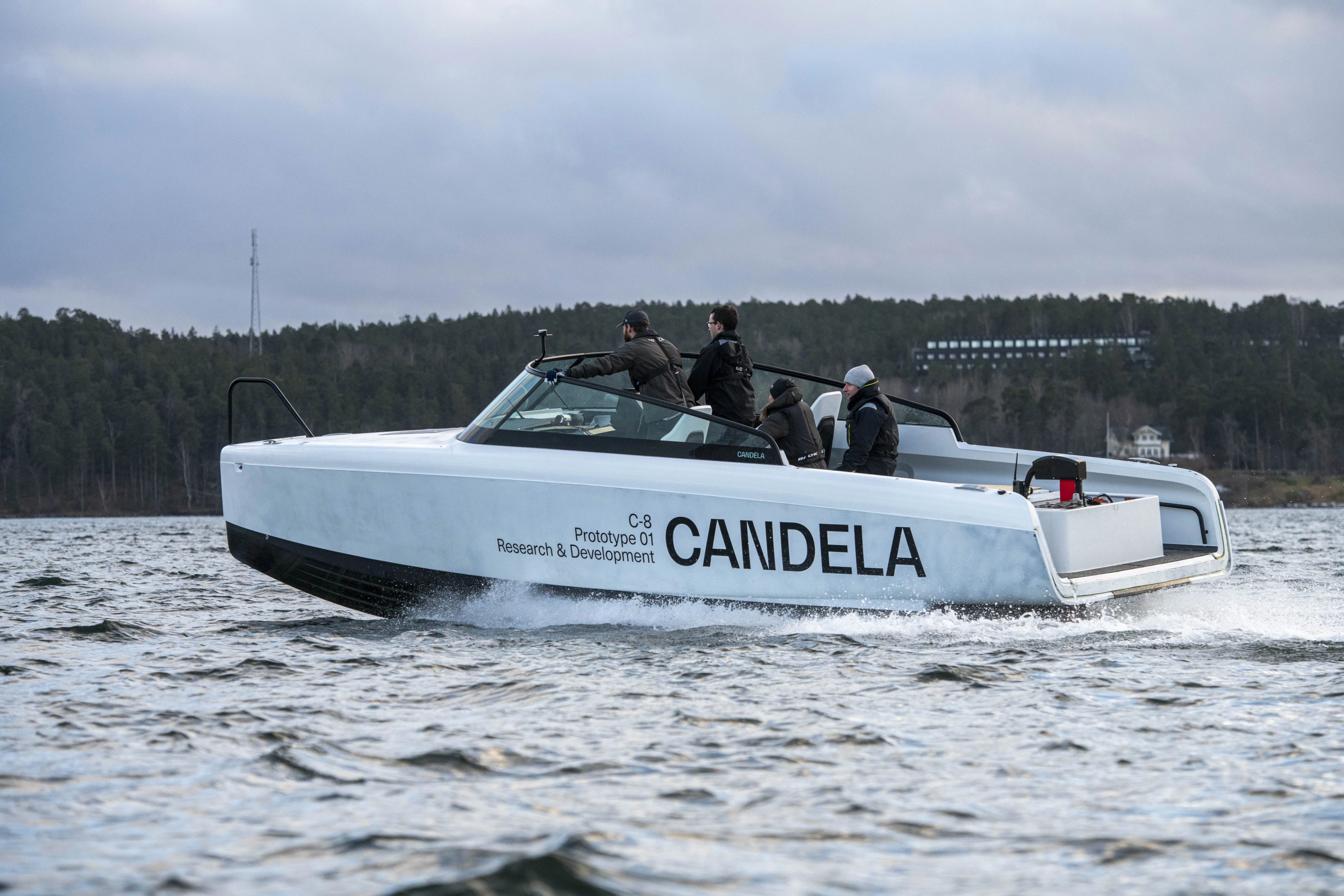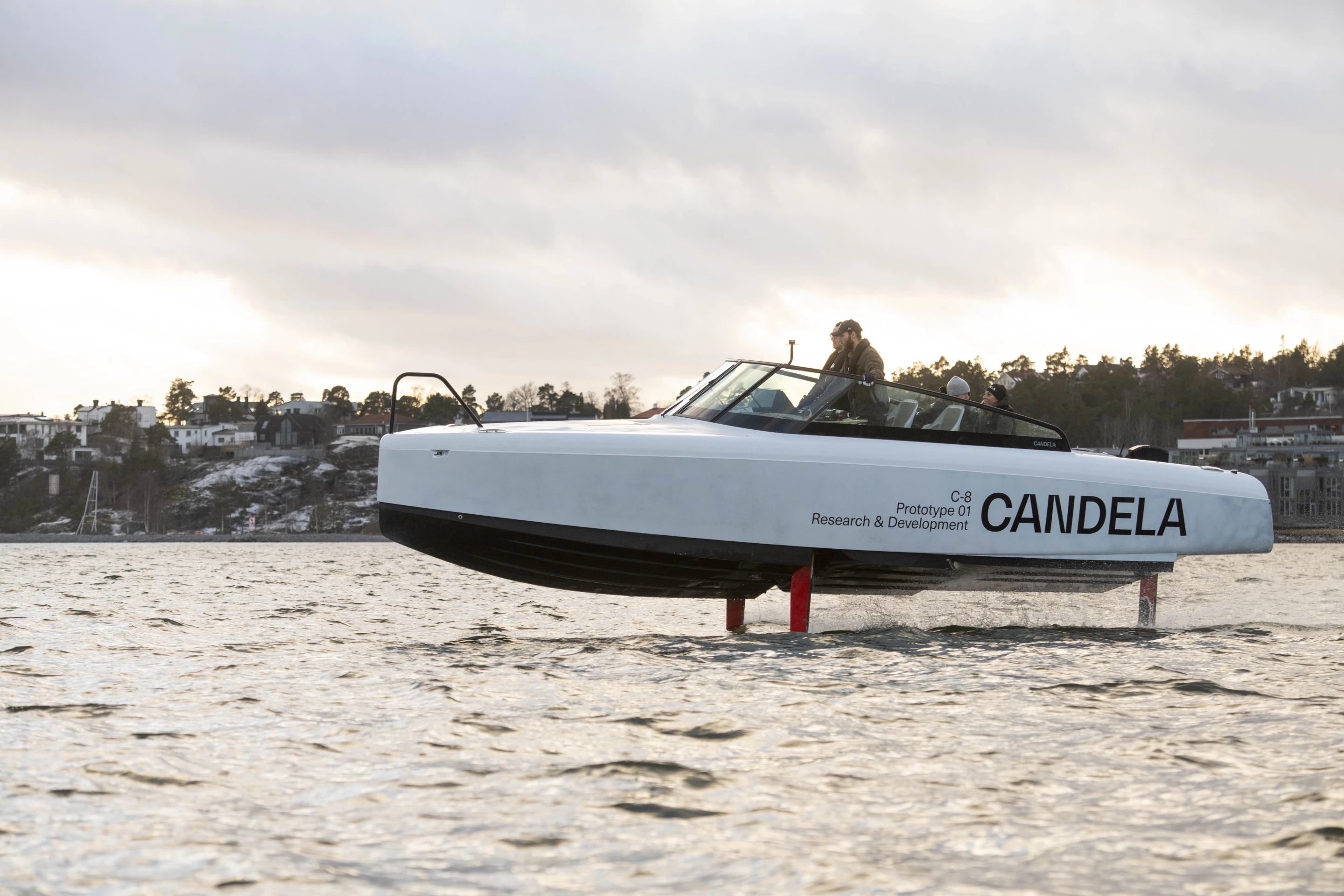Candela aims to smash electric boat range records with its C-8, using a hydrofoil system that eliminates as much as 80 percent of the drag you'd get from a conventional design. The first prototype C-8 has now flown, and Candela has released video.
The marine sector is going to be hard to electrify. It takes a lot of energy to push through water, as David Hasselhoff would attest, and lithium batteries carry a fairly depressing 2 percent of the energy content of an equivalent weight of gasoline. Thus, electric boats simply don't go very far at the moment.
Candela's solution is to get the hull right up out of the water on hydrofoils. Takeoff speed for the C-8 is 16 knots (18.4 mph, 29.6 km/h), upon which it rises up until nothing but three carbon struts are visible touching the water. Under the surface, the front two are joined by a wing-shaped foil, and the rear terminates in a torpedo-shaped "C-Pod" electric propulsion unit with wings extending out from the sides. These foils are retractable when the water gets shallow, to the point where you can lift the motor out of the water entirely.

The motor makes 45 or 50 kW (60/67 hp), which doesn't sound like a heap, but Candela says it'll propel this 1,605-kg (3,538-lb), 8.5-m (28-ft) boat through the water at speeds up to 30 knots (34.5 mph, 55.6 km/h) thanks to that extreme drag reduction. At a cruising speed of 20 knots (23 mph, 37 km/h), Candela expects this thing to cover more than 50 nautical miles (57.5 miles, 92.6 km) on a single charge of its relatively humble 44-kWh battery.
The company says that's "two-three times longer than conventional electric speedboats with 300 percent bigger batteries," although if Sarvo Marine ever gets its shiny aluminum Sarvo 37 built, it promises a whopping 100+ nautical miles from an equally whopping 350-kWh battery pack.
Candela pitches the C-8 as a day cruiser, and while it can't compete with similar-sized dinosaur burners for total fuel range, it does have a few benefits on the side. Total silence is one, as well as the ability to cruise without leaving much of a wake behind you. Autopilot is another; the fly-by-wire steering system will follow a set course for you hands-free. And the ride will be super smooth as the boat glides over choppy water.
Candela says it's already taken 100 orders on the C-8, "even outselling most other 28-foot ICE boats in the premium category." At a starting price of €290,000 (US$330,000), it's a fairly pricey toy – but then people will flip when they see this boat rising up on its stilts and silently cruising off into the sunset.
Check out the video of the first flights below.
Source: Candela










